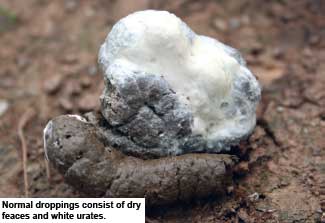Egg production drops from Brachyspira

In various parts of the world, an increasing number of Brachyspira infections in layer flocks are reported. Particularly in free-range systems, this infectious bacterial disease seems to thrive. A drop in egg production is unavoidable in infected flocks.
By David Burch, Veterinarian, Octagon Services Ltd, UK
Over the past 20 years we have identified varying levels of diarrhoea or caecal droppings in laying hens, especially in free-range birds, and thought that it was due to worms or other parasites such as coccidia, or bacterial infections such as clostridia. It is only in the past decade that we have been able to grow and identify different Brachyspira bacteria, which cause Avian Intestinal Spirochaetosis (AIS), and it is only recently that we are determining their effects on egg production, bird health and mortality. Some Brachyspira seem more significant than others and are associated with more disease; however, recent work is showing that in the right conditions (right for the bacteria) they can all have a potentially pathogenic or disease-causing effect.
Worldwide incidence
Recently there have been several reports of the prevalence of Brachyspira infections in various parts of the world (Table 1) and now it has spread worldwide. The major recognised pathogenic Brachyspira are B. intermedia, B. pilosicoli and B. alvinipulli in caged systems. However, B. murdochii and B. innocens, although considered non-pathogenic in caged birds, have been associated with depressed egg production particularly in free-range systems. Brachyspira hyodysenteriae, the main pig Brachyspira, has also been isolated in hens, closely associated with pig farms. In a survey in the UK of 222 commercial layer, pullet and breeder farms 74% of the flocks were positive and 25% were associated with the pathogenic strains. When this was broken down by type of farm a different picture arose (Figure 1). Breeder layer flocks could be infected, but it was not found in in-rear pullet flocks up to 15 weeks of age. The organism is spread by the faecal-oral route and there is a natural break as it dies out on the egg surface during hatching. Free-range and free-range organic flocks were heavily infected (approx. 90%) and less so in caged flocks (76%). Barn flocks were all infected, although there were relatively few flocks tested.
Caged flocks took longer
Brachyspira infection began at a much earlier stage in free-range flocks, by 22 weeks of age, soon after the birds were allowed to go outside (Figure 2). By comparison, caged flocks took longer for the infection to spread, but the majority of flocks were positive by 36 weeks of age. This explains the high level of infection in the US survey by Myers and others in 2009 with 86% of flocks infected as they were over 40 weeks of age. There were not many barn flocks tested, but the younger ones of 31-34 weeks of age were all positive. Interestingly, there did not appear to be any difference in age of infection between caged flocks using deep pits for waste disposal or belt cleaning. This was considered surprising as the number of flies in deep-pit systems is usually much higher. It is also thought that flies are important, mechanical carriers of Brachyspira from faeces to feed and thereby complete the infection cycle.
Rodents and wild birds
Another potential carrier of concern in housed systems is rodents. A survey in Sweden identified rodents, particularly rats, as major carriers of Brachyspira on poultry farms (Table 2). Wild birds are also potential carriers of Brachyspira, therefore bird proofing of houses is important. This is impossible in freerange systems, and full biosecurity is a weakness of the system. Multi-age sites and multi-type systems can also be contributing factors for the continuous circulation and spread of infection. During the UK survey, the impact of different Brachyspira infections on production were noted. Caged flocks were graded on target with 315 eggs/hen housed (HH), below target <310 and above target >320. Similarly, free-range flocks were gauged 285 eggs/HH as on target, below target <280 and above target >290 (Table 3). Brachyspira intermedia was expected to cause drops in egg production, and it did significantly in caged flocks, whereas B. pilosicoli appeared to have very little effect. Medication of the flocks, usually with tiamulin (Denagard – Novartis AH) may have influenced some of the flocks’ egg production results, as the pathogenic Brachyspira are now being recognised as significant causes of production losses. Surprisingly, B. innocens infection (considered non-pathogenic previously) in free-range flocks was associated with signify cant drops in egg production (Figure 3).
More problems expected
With the dramatic changes that are going to occur regarding layer production over the next couple of years, with the phasing out of cages, productivity is going to be a key issue. Cages have generally separated hens from their faecal waste and as a result have a significantly better performance than free-range hens. Barns are somewhere in between. Enriched colony cages will still be able to maintain this separation, however, there is already a major move to barns in some countries and certainly towards free-range flocks in the UK, and therefore likely that we will be facing more concerns regarding Brachyspira infections in commercial laying flocks.












